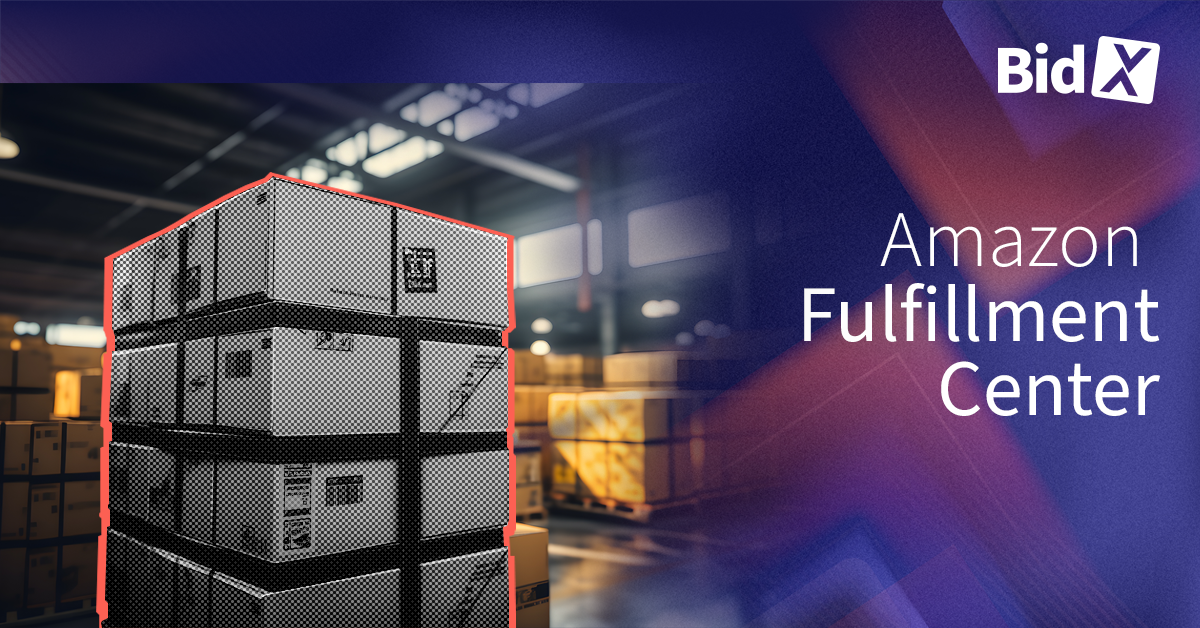Amazon Retail Arbitrage: What Is it and How Does it Work?
Arbitrage sounds like something out of a financial textbook, but don't let it intimidate you.
In the retail world, arbitrage is simply the practice of making a profit by taking advantage of a price difference between two or more markets.
Sellers who engage in it typically purchase a product at a discounted price from an online marketplace or retail store and then sell the same item for a higher price on another platform.
For example, let's say a popular toy is selling for $10 at Walmart, but it's being sold for $15 on Amazon. You — the seller or "arbitrageur" — could purchase the toy at Walmart and then sell it on Amazon for a $5 profit. The opportunity for an arbitrage transaction exists because of the price discrepancy between the two markets.
If you're interested in pursuing arbitrage as a way to make money online, keep reading to learn more about how it works and how to get started right away.
For this article, we'll focus on retail arbitrage as it pertains to Amazon — one of the most popular platforms for reselling — and discuss how it stacks up against other Amazon business models.
How Does Arbitrage Differ From Other Business Models?
Arbitrage is just one of several ways to make money on Amazon. Other common methods include private labeling, dropshipping, and wholesale.
Let's take a closer look at how arbitrage differs from each of these business models:
Private Labeling
In the private label business model, the asset or product is created by a third-party manufacturer and sold under the seller's brand. Therefore, Private Labelers have complete control over their product, from its design and production to packaging and marketing. Arbitrageurs on the other hand have zero control over the product they're selling, as it has already been created and is ready for resale.
Dropshipping
In dropshipping, arbitrageurs act as middlemen by selling products they don't normally keep in stock but are listed as available in their online inventory. When an order is placed, the seller contacts the supplier, who then ships the product directly to the customer. To make a profit, the arbitrageur pays the supplier a fraction of the sale price, pocketing the difference.
Wholesale
In wholesale, the arbitrageur buys products in bulk directly from the supplier at a discounted rate and then sells them to individual customers at a higher price. Wholesalers typically have to purchase a greater volume of products upfront, which can be risky if the items don't sell quickly.
What Are the Pros and Cons of Amazon Arbitrage?
As with any business model, retail arbitrage has its pros and cons. Understanding these before getting started can help you make an informed decision about whether it's right for you.
Pros:
- It's relatively easy to get started with arbitrage, as the barrier for entry is low. All you need is an Amazon seller account and access to products you can source at a lower price.
- Because you're selling branded products that are already in demand, you don't have to worry about marketing or product development costs.
- You have the potential to make a strong profit margin if you source products wisely and price them competitively on Amazon.
Cons:
- Retail arbitrage can be a time-consuming business model, as it requires constant sourcing of new products and monitoring of prices.
- It can be challenging to scale an arbitrage business due to a lack of control over product supply and the ever-changing retail landscape.
- There's also the risk of getting suspended from Amazon if you source products from gray-market suppliers.
On this last issue, it's always a good idea to check Amazon's Brand Registry or list of restricted products before you attempt to source and resell a particular item on the platform.
How To Get Started With Arbitrage on Amazon
If you're interested in getting started with Amazon arbitrage, here's what you need to do:
1) Create a Seller Account
Go to sell.amazon.com and click "Sign Up." From there, you'll be prompted to create a seller account or link your existing Amazon account.
You'll then need to choose between two types of seller accounts: Individual or Professional.
If you plan on selling fewer than 40 items per month, you can opt for an individual seller account that will charge you $.99 per sold item. Otherwise, you can sign up for a professional seller account, which costs a flat $39.99 per month. Keep in mind, however, that both plans have additional selling fees.
Also, consider whether the order will be "Fulfillment by Merchant" (FBM) or "Fulfillment by Amazon" (FBA). FBM orders are your responsibility to store and ship, while FBA orders are stored in Amazon warehouses and fulfilled by Amazon workers. (Note that FBAs tack on a fulfillment fee and a monthly storage fee.)
2) Find Products to Arbitrage on Amazon
There are a few different ways to source in-demand products, but one of the simplest is to use the Amazon Seller App to scan items while you're out and about shopping.
When you find a product you want to resell on Amazon, simply scan the barcode with the app and it will tell you the current selling price on the platform, plus any relevant information such as how long the listing has been active and the number of reviews.
The data points provided by the app help determine whether a product is a good arbitrage opportunity. In general, you'll want to look for an item listed below the 100,000 sales rank, as these are more in demand. Once you've scanned the item's barcode, a green checkmark in the app will let you know if you're allowed to resell it on Amazon.
3) List the Products on Amazon
Log into your Amazon seller account and click "Add a Product."
From there, you'll need to search for the product you want to list and select it from the drop-down menu. Then you'll need to fill out the product listing, including the product title, product images, Bullet Points, and other details.
4) Send Your Inventory to Amazon (FBA option)
If you're fulfilling orders yourself (FBM), then you can skip this step. Otherwise, if you want Amazon to handle storage and shipping for you (FBA), then you'll need to send your inventory to an Amazon fulfillment center.
To do this, navigate to your Seller Central dashboard on Amazon, go to “Manage inventory” and select each product that you want to ship.
Amazon has a handy guide that goes into more detail if you need it.
5) Optimize and Monitor Your Listings
The final step is to make sure your product listing is as optimized as possible to help it rank higher in search results.
This means using relevant keywords in your title and product description and running paid ads to help get your listing in front of potential buyers.
You'll also want to keep an eye on your arbitrage business by checking in on your Amazon seller dashboard regularly. This will help you spot any potential issues and take action accordingly.
Strategies for retail arbitrage in 2024
Now that you are familiar with the basics of retail arbitrage on Amazon, we would like to introduce you to some advanced strategies to further increase your chances of success.
1. Seasonal and trendy products:
In addition to simply recognizing trends and seasonality, an advanced strategy is to actively research and anticipate upcoming trends. By looking ahead, you can source products that are in high demand during certain periods and capitalize on consumer preferences.
2. Discontinued products for higher profits:
Selling discontinued products can be hugely profitable. But instead of relying solely on large retailers, explore local stores or smaller stores. They may have leftover stock or rare, discontinued items. Products labeled as "refills" are particularly interesting, as they may still be in high demand despite being discontinued.
3. Effective inventory management:
Use inventory management software to optimize your stock levels. Through accurate inventory control, you can avoid shortages, optimize the reordering process and increase your profitability.
4. Excellent customer service and reviews:
Excellent customer service is critical to your success on Amazon. Make sure you respond to customer inquiries promptly, process orders promptly and handle returns efficiently. Positive customer reviews contribute significantly to your seller rating, which has a positive impact on your overall success.
5. Observe legal aspects:
Pay attention to legal and compliance-related aspects of retail arbitrage. Adhere to Amazon guidelines, source products legally and minimize the risk of counterfeiting allegations.
6. Diversification as a key strategy:
Successful retail arbitrage sellers often diversify their strategies. Consider expanding into other business models such as wholesale or private label to broaden your product portfolio. Exploring alternative marketplaces away from Amazon, such as eBay or Walmart, can open up additional revenue streams.
These tips should help you take your Amazon Retail Arbitrage business to the next level. Remember, adaptability and continuous improvement are critical to succeeding in the ever-changing world of e-commerce.
The Bottom Line
Retail arbitrage is a numbers game: you'll need to source and sell a decent volume of products to make a meaningful profit. It also requires loads of patience, as it can take time to build up a solid arbitrage business on Amazon.
That said, arbitrage can be a great way to get started in the world of e-commerce with relatively little upfront investment and low risk. Once you get the hang of it, you can start diversifying your inventory and scale your business to new heights. For this, placing ads for your products on Amazon is inevitable. Since the whole process is already very time-consuming, we recommend you to use a PPC management tool like BidX for placing ads. 
-2.jpg)

-2.png)



